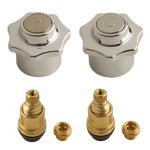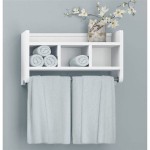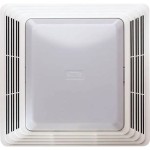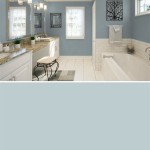Little Black Bugs in the Bathroom: Identification, Causes, and Control
The discovery of small, dark insects in the bathroom is a common household concern. These minuscule invaders can be unsettling and raise questions about hygiene and potential property damage. Identifying the specific type of bug is crucial for implementing effective control measures. While numerous insect species can find their way into bathrooms, certain types are more prevalent than others.
This article will explore common types of small black bugs found in bathrooms, the reasons they are attracted to these environments, and the range of strategies for eliminating them and preventing their return. Understanding the root cause of the infestation is paramount to selecting the appropriate course of action for long-term resolution.
Common Types of Little Black Bugs Found in Bathrooms
Several types of small, dark insects frequently inhabit bathrooms due to the moisture, warmth, and potential food sources they offer. Distinguishing between these common culprits is crucial for targeted treatment.
Drain Flies (Psychodidae): Also known as moth flies or sewer gnats, drain flies are characterized by their small size (approximately 1/8 inch), fuzzy bodies, and light-colored wings, which they hold roof-like over their bodies. They are typically black or dark brown. Drain flies are attracted to stagnant water and organic matter found in drains, sewers, and septic systems. They reproduce in the gelatinous film that lines these drains and are often seen hovering near sinks, showers, and toilets.
Fruit Flies (Drosophilidae): While primarily associated with overripe fruits, fruit flies can also be found in bathrooms, especially if there are sources of fermenting organic matter. They are small (about 1/8 inch), have reddish-brown bodies, and characteristic red eyes. Fruit flies are attracted to the smell of fermentation, which can emanate from drains, damp sponges, and even residual shampoo or soap scum.
Springtails (Collembola): These tiny insects are often mistaken for fleas but lack the ability to bite. They are typically grayish-black or dark brown and measure less than 1/8 inch in length. Springtails thrive in moist environments and are frequently found in soil, leaf litter, and decaying organic matter. In bathrooms, they are attracted to damp areas under sinks, around leaky pipes, and in potted plants. They possess a forked appendage under their abdomen (the furcula) which they use to jump when disturbed, hence the name "springtail."
Booklice (Psocoptera): Booklice are small (less than 1/4 inch), pale brown or gray insects that feed on mold and fungi. They are attracted to humid environments and are often found in areas with poor ventilation. In bathrooms, they may be found behind wallpaper, around damp wood, or in areas where mold is growing. While they don't bite or sting, their presence indicates a moisture problem that needs addressing.
Ants (Formicidae): Several ant species, including pavement ants and odorous house ants, are dark brown or black and can be found in bathrooms seeking water and food. They often enter through cracks in walls, floors, or around pipes. Ants leave behind a pheromone trail that attracts other ants to the same location, leading to a persistent infestation if not properly addressed.
Carpet Beetles (Dermestidae): While the larvae are more commonly associated with fabric damage, adult carpet beetles (typically black or mottled black and brown) can be found in bathrooms. They are attracted to light and may wander into the bathroom while searching for suitable breeding grounds. While they don't directly feed on bathroom materials, their presence can indicate a potential infestation elsewhere in the house.
Correct identification is essential for selecting the most effective treatment strategy. Observing the bug's physical characteristics, behavior, and location within the bathroom will help narrow down the possibilities and guide the approach to eradication.
Reasons for Infestation: Attractants in the Bathroom Environment
Bathrooms provide a unique combination of factors that attract small black bugs. Understanding these attractants is critical for implementing preventative measures and minimizing the risk of future infestations.
Moisture: The primary attractant for many small black bugs is moisture. Bathrooms are inherently humid environments due to showers, baths, and leaky pipes. Standing water, condensation, and damp surfaces create ideal breeding grounds for drain flies, springtails, and booklice, all of which require moisture to thrive. Leaky faucets, showerheads, and toilets contribute to persistent dampness and provide a constant water source.
Organic Matter: Drains, especially those in sinks and showers, accumulate organic matter such as hair, soap scum, and food particles. This decaying organic matter serves as a food source for drain flies and fruit flies. The gelatinous film that forms inside drains is a particularly attractive breeding ground for drain flies, as it provides both food and a protected environment for their larvae.
Mold and Mildew: Damp conditions in bathrooms encourage the growth of mold and mildew. Booklice feed on mold and fungi, making bathrooms a desirable habitat for them. Even small patches of mold growth behind wallpaper, under sinks, or around shower stalls can attract these insects.
Accessibility: Small cracks and crevices in walls, floors, and around pipes provide entry points for insects. Ants, in particular, are adept at finding even the smallest openings to access water and food sources inside the bathroom. Unsealed windows and doors also contribute to ease of access.
Food Sources: While not a primary food source for all bugs, spilled food particles, crumbs, and even the residue from personal care products can attract certain insect species. Ants, for example, will forage for any available food source, even in small quantities.
Warmth: Bathrooms are often warmer than other areas of the house, particularly in the winter. This warmth attracts insects seeking a more comfortable environment, especially during colder months.
Addressing these attractants is crucial for long-term pest control. Reducing moisture, eliminating food sources, sealing entry points, and maintaining a clean bathroom environment will help deter insects and prevent infestations.
Control and Prevention Strategies
Eradicating small black bugs from the bathroom requires a multi-faceted approach that targets both the existing infestation and the underlying causes. Effective control strategies combine sanitation, preventative measures, and, if necessary, targeted insecticide applications.
Sanitation: Thorough cleaning is the first and most important step in eliminating an infestation. This includes regularly cleaning the sink, shower, and toilet; removing soap scum and hair from drains; and wiping up any spills promptly. Particular attention should be paid to areas that tend to accumulate moisture, such as under the sink and around the toilet base.
Drain Cleaning: Drain flies and fruit flies often breed in drains. Cleaning drains regularly with a drain cleaner specifically designed to break down organic matter is crucial. Alternatively, a mixture of baking soda, vinegar, and hot water can be used to flush out drains. Pouring boiling water down the drain can also help kill larvae and remove lingering organic matter. Repeat this process regularly to prevent future infestations.
Moisture Control: Reducing moisture is essential for preventing many types of insect infestations. Ensure proper ventilation in the bathroom by using the exhaust fan during and after showers and baths. Repair any leaky faucets or pipes promptly. Consider using a dehumidifier to reduce humidity levels in the bathroom, especially if it is poorly ventilated. Wipe down wet surfaces after use to prevent water from pooling. Regularly clean and dry shower curtains and bath mats.
Sealing Entry Points: Seal any cracks or crevices in walls, floors, and around pipes with caulk or sealant. Install weather stripping around windows and doors to prevent insects from entering from outside. Ensure that window and door screens are in good repair and properly fitted.
Insecticides: While sanitation and preventative measures are often sufficient, insecticide applications may be necessary in severe infestations. Choose insecticides that are specifically labeled for use in bathrooms and target the specific insect species present. Follow the instructions on the product label carefully. Consider using insecticidal soaps or diatomaceous earth for a less toxic approach. For drain flies, using a drain maintainer containing enzymes and beneficial bacteria can help break down the organic matter in drains and prevent breeding. Professional pest control services can provide more targeted and effective insecticide treatments, especially for persistent infestations.
Traps: Various traps are available for controlling specific insect species. Fruit fly traps can be made using a small dish of apple cider vinegar with a few drops of dish soap to break the surface tension. Drain fly traps can be purchased or made at home using sticky tape placed over the drain opening. These traps can help reduce the population of adult insects and provide an indication of the severity of the infestation.
Addressing the Source: It's important to identify and address the root cause of the infestation. If springtails are present, investigate potential sources of moisture, such as leaky pipes or overwatered houseplants. If booklice are present, address any mold or mildew growth. If ants are present, identify the entry point and follow the trail back to the nest, if possible. Eliminating the source of the infestation is crucial for long-term control.
A combination of these strategies, tailored to the specific insect species and the unique conditions of the bathroom, will provide the most effective means of eliminating and preventing infestations of small black bugs.

Bathroom Bugs Identification Guide How To Get Rid Of Each Type A Z Animals

Bathroom Bugs Identification 15 You Ll See In A

Tiny Black Bugs And Other Common Bathroom Pests

Little Black Flying And Walking Insects In My Bathroom

Tiny Black Bugs In Bathroom Bedroom Windows And Basement Bugguide Net

Why Black Bugs On Your Bathroom Ceiling Are A Sign Of An Even Bigger Problem

Bathroom Bugs Identification 15 You Might Find In The

What Are These Little Black Beetles In My House Alta Pest Control

What Are Those Little Dark Colored Flies That Come Out Of My Bathroom Sink Uf Ifas Entomology And Nematology Department

See Black Specks On Melting Snow Why Fleas Are Really A Sign Of Spring Mlive Com







